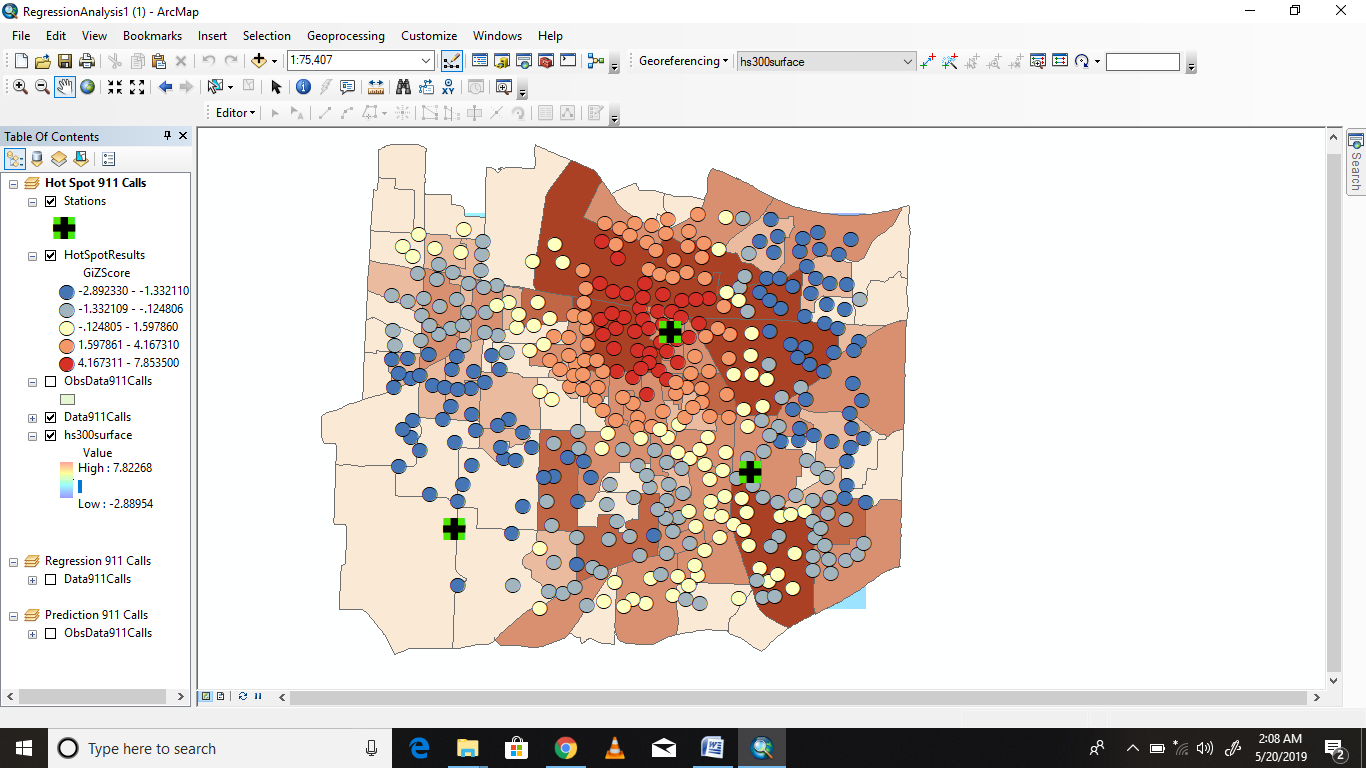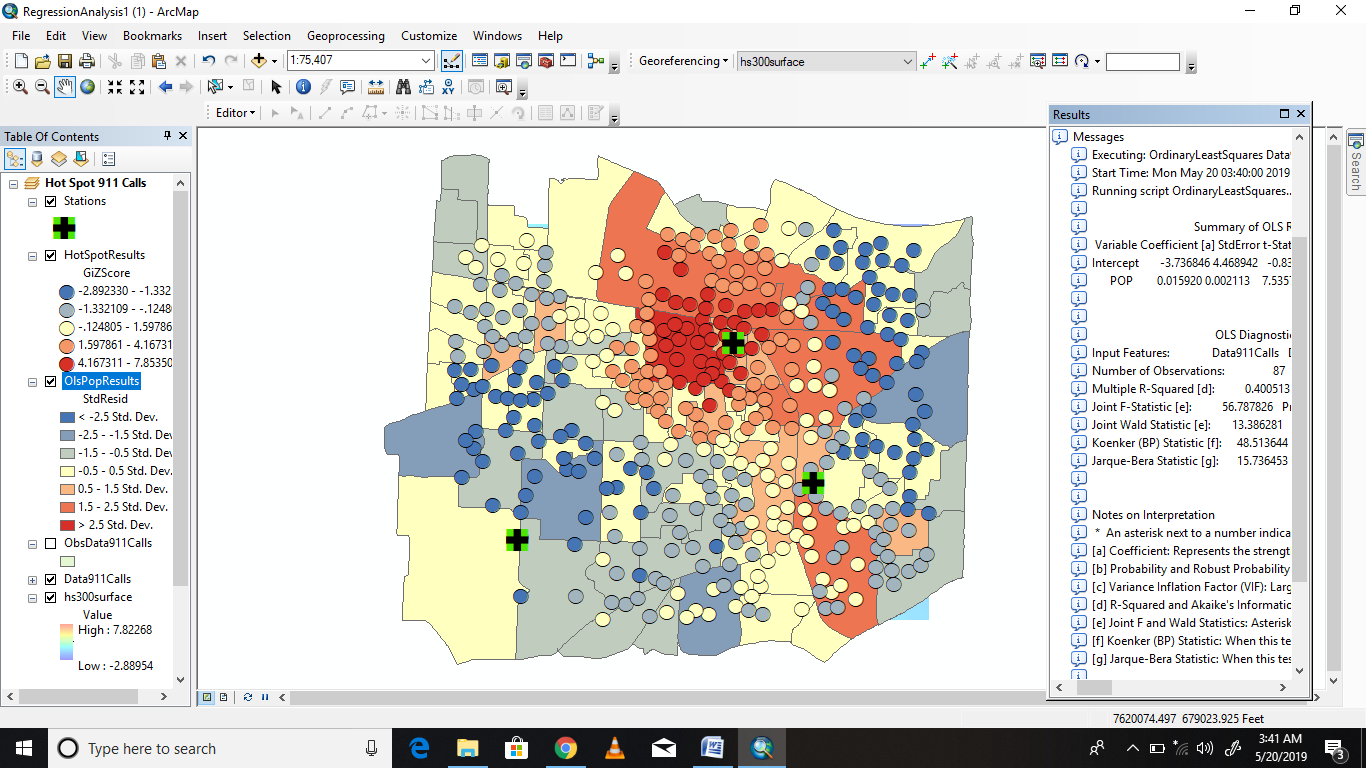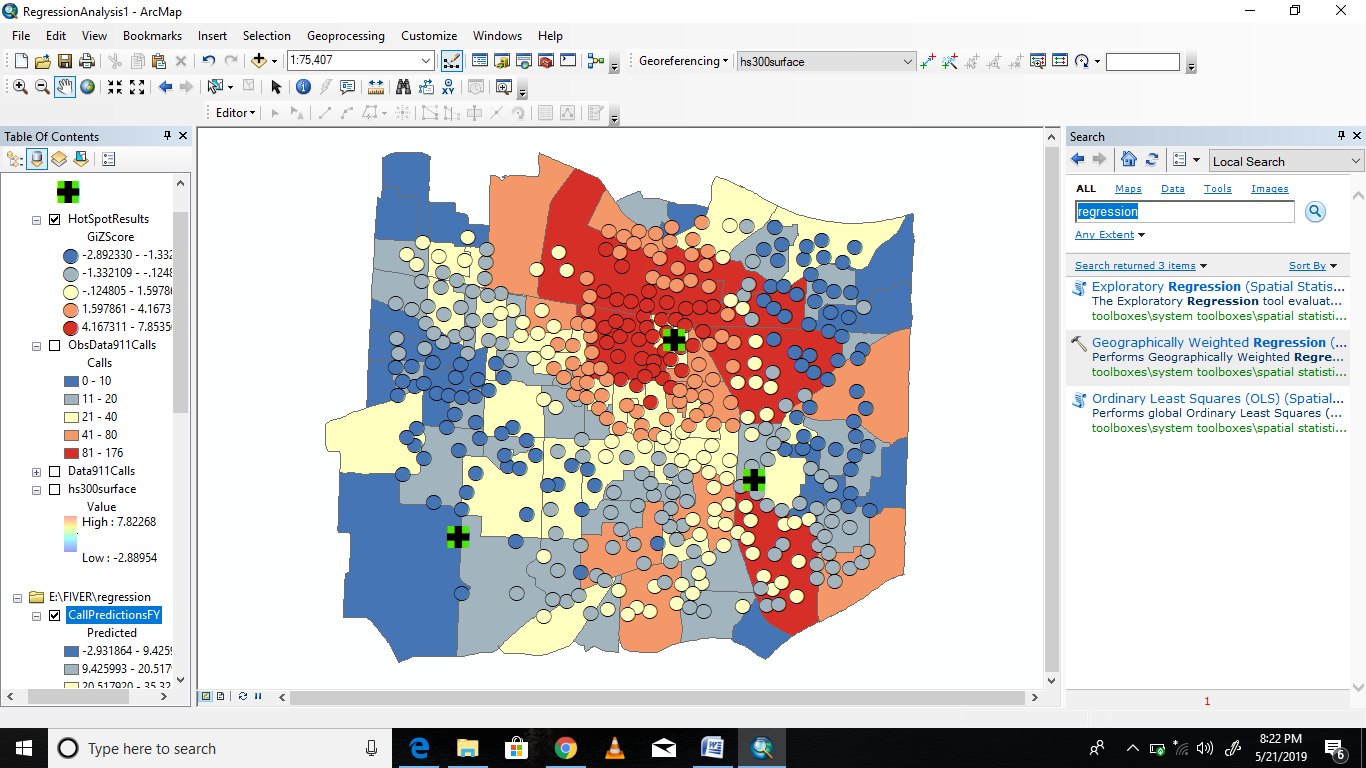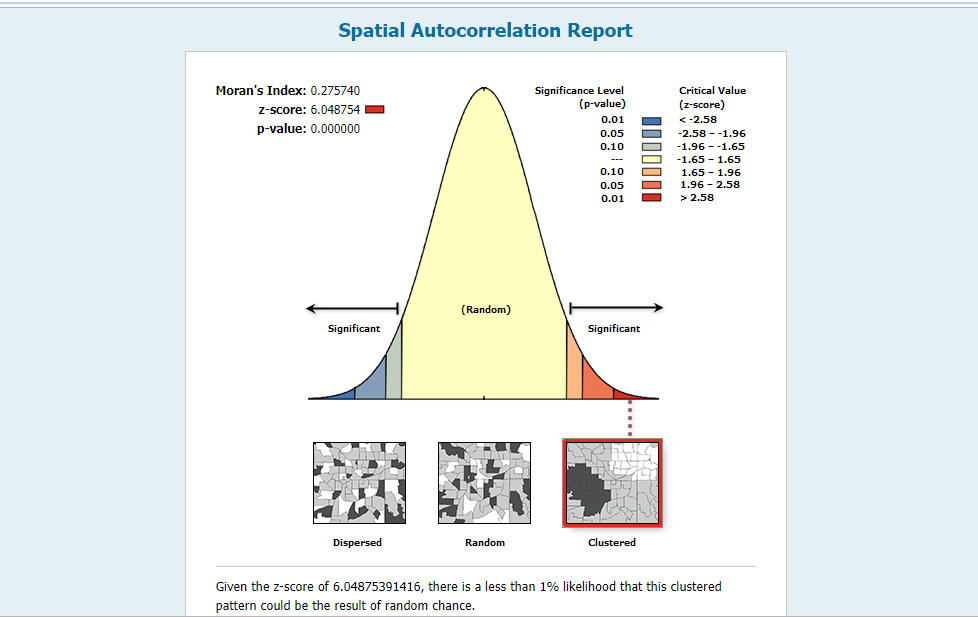
911 Calls Predictive Analysis using GWR
Utilizing Geographic Weighted Regression to Examine 911 Calls and Hospitals in the U.S.



Team Members:
Rana Faizan
Afsheen Sheikh
Waleed Ahmed
Muhammad Hamza
Advisors:
Dr. Mubashir Riaz Khan (Professor)
Affiliation:
Arid University
Course:
Geo-Statistics
Team Members:
Rana Faizan
Afsheen Sheikh
Waleed Ahmed
Muhammad Hamza
Advisors:
Dr. Mubashir Riaz Khan (Professor)
Affiliation:
Arid University
Course:
Geo-Statistics
Project Description:
This project was accomplished alongside other BS GIS students at Arid University: Waleed, Rana & Afsheen. The 911 Analysis was completed as my part of the assignment project in Geo-Statistics. Other members worked on different locations and used varying methodologies.
Research Question:
How do localized socio-demographic factors influence the spatial distribution of 911 emergency calls?
Introduction:
The increasing reliance on emergency services, notably reflected in the frequency and nature of 911 calls,
underscores the critical need to understand the spatial dynamics and underlying factors contributing to emergency incidents.
Geographic variations in socio-demographic, environmental, and infrastructural elements often play a pivotal role in shaping the distribution and intensity of 911 calls within diverse geographic regions.
This study employs Geographic Weighted Regression (GWR) within the ArcGIS framework to delve into the intricate spatial relationships between various factors and the patterns of 911 emergency calls.
Project Question:
1. How do different variables impact emergency response times across areas?
2. Can GWR identify and explain hotspots of high 911 call activity?
3. How do localized factors influence the spatial distribution of 911 emergency calls?
Data:
Maps:
Portland Oregon Analysis
By leveraging the capabilities of GWR, this research aims to explore the localized and spatially varying influences that contribute to the disparities in 911 call distributions. GWR allows for the examination of how specific variables—ranging from population density, socio-economic characteristics, environmental conditions, to urban infrastructure—exhibit differential impacts on the spatial patterns of emergency incidents across distinct geographic areas. In addition to the GWR Analysis, this research question is further explored through summary statistics, exploratory analyses, correlation and collinearity tests, and spatial autocorrelation of the GWR outputs using Moran's I.
View Exploratory Regression with Portland Admin Boundary




Portland Regression Results
The Ordinary Least Squares (OLS) regression analysis yielded insightful results for understanding the dynamics of 911 emergency calls. The model exhibited strong overall significance (F-statistic: 106.78, p < 0.01) and demonstrated a notable explanatory power (R-squared: 0.839, Adjusted R-squared: 0.831). Several key variables emerged as significant predictors: population (POP) (Coefficient: 0.0055, p < 0.01), jobs (JOBS) (Coefficient: 0.0041, p < 0.01), lower education levels (LOWEDUC) (Coefficient: 0.1042, p < 0.01), and distance to urban center (DST2URBCEN) (Coefficient: -0.0017, p < 0.01). These coefficients signify that as population, job opportunities, and lower education levels increase, so does the frequency of emergency calls, while proximity to urban centers appears to correlate with a decrease in call volume. The diagnostics highlighted robustness in the relationships despite the Koenker (BP) Statistic being statistically significant (p = 0.003), indicating some potential non-stationarity or heteroskedasticity in the model. Nonetheless, the findings elucidate crucial factors influencing 911 calls, emphasizing the importance of socio-demographic and spatial considerations in emergency service planning and resource allocation.


The Geographic Weighted Regression (GWR) analysis provided nuanced insights into the localized influences shaping the spatial distribution of 911 emergency calls. This approach revealed spatial variations in the relationships between explanatory variables and emergency call volumes across different geographic areas. The GWR results highlighted varying magnitudes and directions of influence for factors such as population density, job opportunities, lower education levels, and distance to urban centers on emergency call frequencies within specific localized regions. By capturing these spatially varying relationships, GWR offered a more tailored understanding of how socio-demographic and geographical factors interplay with emergency incidents, thereby offering a valuable framework for targeted intervention strategies, precise resource allocation, and optimized emergency service planning at a local level.





Discussion:
The combined analyses of Ordinary Least Squares (OLS) regression and Geographic Weighted Regression (GWR) in exploring the dynamics of 911 emergency calls present a comprehensive understanding of the multifaceted influences driving emergency incidents. The OLS results underscored the broad patterns, revealing significant relationships between population density, job opportunities, lower education levels, proximity to urban centers, and the frequency of emergency calls. These findings suggest a nuanced interplay between socio-demographic factors and emergency incidents, emphasizing the need for holistic strategies in emergency service planning. While the OLS model provided an overarching view, the GWR analysis delved deeper, revealing spatial variations in these relationships, emphasizing the localized nature of these influences. GWR highlighted the heterogeneity in factors affecting emergency call volumes across different geographic areas, enhancing our understanding of how specific variables impact emergency incidents in distinct localized contexts. The integration of these approaches facilitates a more comprehensive perspective, offering insights critical for tailored interventions, resource allocation, and strategic planning to optimize emergency services at both broader and finer geographical scales. This holistic understanding can significantly inform policies aimed at enhancing emergency response, resilience, and community safety.
Project Datasets :
Please feel free to contact me at my email address or through my LinkedIn Account below.
mhwahla360@gmail.com